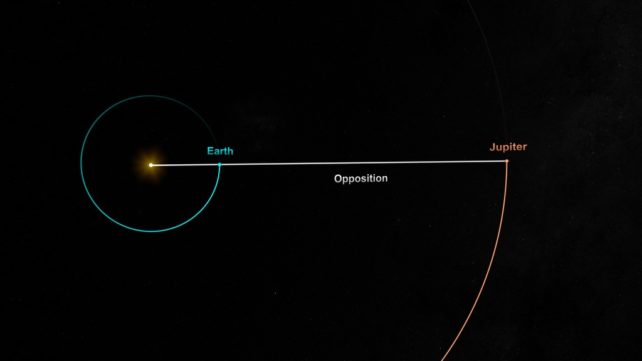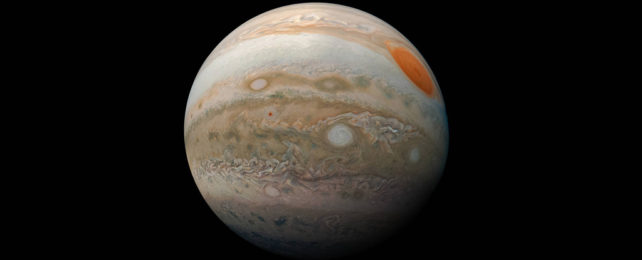If you hadn't already noticed, the 'king of the planets' is looking particularly glorious as of late. In fact, it's been a while since anybody has seen the gas giant so positively radiant.
On this Monday, September 26, Jupiter will come the closest to Earth it's been in 59 years – and the view is going to be magnificent. You won't even need a telescope (but it never hurts if you've got one handy).
It's all due to a serendipitous combination of what's known as opposition and the perfect perihelion. Read on.
Every twelve Earth years, give or take, Jupiter's distance from the Sun shrinks to a mere 740 million kilometers (about 460 million miles), giving those of us in the uptown part of the Solar System a prime view of the massive outer suburb planet as it looms larger than usual in the evening sky.
Usually, the added shine Jupiter receives at its closest approach to the Sun isn't a big deal for those of us viewing from here on Earth. We are on our own orbital path, so we're not always in the same vicinity.
But this time, we're in the neighbourhood. (Sort of.)
Technically, the point at which Jupiter's distance from the Sun is at its absolute shortest – known as its perihelion – won't occur until early next year. By then, Earth will be zipping around the corner in its own endless orbit.

But our closest annual passing of Jupiter occurs this week, a timing known as being in opposition. It's the one time of the year a perfectly straight line can be drawn from the Sun to Earth to Jupiter.
Taken together, opposition and a perfect perihelion would give us a full-frontal, front-row seat of Jupiter shining bright. We might be a touch early for a perfect perihelion, but the last time Earth was this close to the giant – just 590 million kilometers away – it was October 1963 and Bobby Vinton was hitting the charts with Blue Velvet.
Could we get any closer to Jupiter? Maybe a touch. While Jupiter's orbit is remarkably circular, Earth's isn't.
In the middle of every year, our planet this its farthest distance from the Sun, about 152 million kilometers. Right now, we're a fraction over 150 million kilometers away, due to arrive at our own perihelion – a distance of about 147 kilometers – early next January.
These astronomical distances are rather trivial in the scheme of things. So don't expect bigger tides, extra earthquakes, or more meteorites than usual.
But if you appreciate some cosmic beauty to start off your evening, look to the eastern horizon just after the Sun sets. Look for a big, bright, shining 'star'.
Jupiter will have an apparent magnitude of -2.9, according to EarthSky.com, which means it'll be one of the brightest objects in the night sky. For context, the full moon has an apparent magnitude of -12.5.
Maybe even grab a telescope or a good set of binoculars before you step out. And say hi to the king for us.
